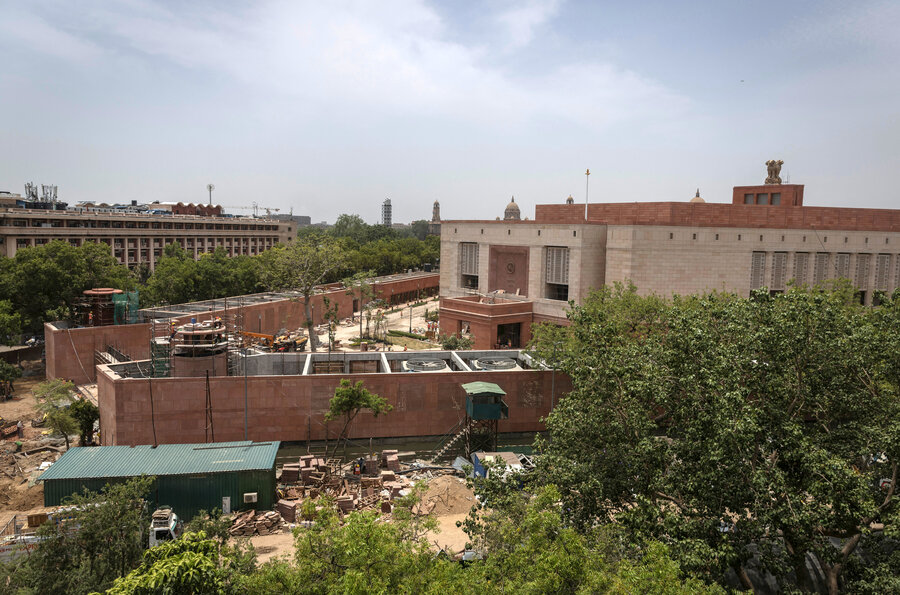
A common force often reshaping the world – the determination of people to be self-defined and self-governed – is playing out in India these days. On Sunday, the country will inaugurate a new building for the national Parliament, but the building itself, meant to hold civil debate, is already an object of robust debate. That’s because its design reflects a rise in Hindu nationalism, challenging India’s founding ideals of secular rule and respect for minority faiths.
One critic, Shiv Visvanathan, a sociology professor, wrote in the Deccan Herald that the new design is “rewriting history and redoing architecture” with the “majoritarian logic” of the dominant Hindu population. Yet the new building also has simple, practical purpose. It replaces a century-old structure that is crumbling and technologically ill-equipped. Its cavernous chambers will accommodate more members – meaning, in theory, better representative democracy as India has become the world’s most populous nation.
But architecture is never solely about use. In light and structure, buildings can highlight beauty, perception, listening, and integrity. As the visible expression of what the late British political scientist Ben Anderson called the “imagined community” of the nation-state, it projects power and identity.
The old Parliament, finished in 1927, was the centerpiece of a capital complex extolling British colonial rule. A vast circular structure, it evoked both the Roman Coliseum and a Hindu temple built in the state of Madhya Pradesh a thousand years ago – a deliberate attempt by its designer to impose Western concepts on Indian sensibilities. “Architecture, more than any other art, represents the intellectual progress of those that are in authority,” Edwin Lutyens, the architect, declared then.
Prime Minister Narendra Modi might very well agree. In December 2020, he laid the cornerstone for the new Parliament building as part of a broader project to assert a new national identity over the original imperial design of the capital complex. “It is a matter of pride for our countrymen that the new [Parliament] will be built by our own people as a prime example of [a self-reliant India],” said Speaker Om Birla on that occasion.
Mr. Modi’s critics point out that lawmakers neither debated nor approved the project. During his nine years in power, he has curtailed the rights of Muslims, eroded judicial independence, and targeted political opponents and journalists. The opening on Sunday coincides with the annual commemoration of the late founder of the Hindu nationalist ideology of Mr. Modi and his party.
Twenty opposition parties had vowed to boycott the building inauguration. In a joint statement on Wednesday, however, the 20 parties struck a note of reconciliation: “Despite our belief that the government is threatening democracy,” they remain “open to sinking our differences and marking this occasion.”
The architecture of a central government, said the late anthropologist Clifford Geertz, “marks the center as center.” Yet the vigorous debate stirred by India’s new Parliament building shows that democracy is proclaimed not by stone, but – as a former Indian Supreme Court justice once observed – “in due deference for the ideals of democracy and the rule of law.”
